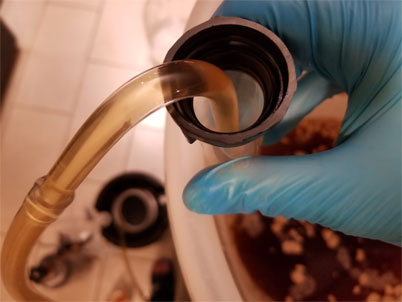
Yes, you can keg a homebrew beer directly from a primary fermenting bucket rather than fermenting in a carboy or doing a secondary fermentation. I brewed an all-grain French Saison beer and let it ferment in my closet for two weeks in a plastic primary fermentation bucket. Normally I transfer into a secondary carboy after about a week or when fermentation is at least 80% complete. However, I let the beer sit for 2 weeks to ensure that the yeast had time to eat all of the complex sugars, clean up fermentation byproducts such as diacetyl (a buttery taste).
Post-fermentation oxygenation (a wet-cardboard taste) was my biggest fear because a large surface of beer is in contact with the air inside a bucket versus a carboy. However, fermentation naturally produces a lot of carbon dioxide that is heavier than air and will provide and protective blanket from oxygen. One could argue that transferring directly from a primary bucket to a keg reduces the risk of oxygen and bacterial contamination.
I am happy to report that the finished beer did not have a buttery or wet-cardboard taste. The first pint was good, but I found that it got even better after a few weeks in the keg. Sadly my girlfriend, Kate Tian, and roommate both liked it and the keg did not last more than a few weeks.

Nathan is a seasoned homebrewer and writes about breweries at Liftylife.ca